
 |
Managing the potentially disabling demands of focus and invention that confront every artist who stands before a boundless canvas is key. It’s been my experience that there is a deep desire on the part of the painter - maybe even a necessity - to arrive at some strategic armature or limiting structure within which to act. After all, as Georges Braque said of the sustained inspiration intrinsic to the demands of Fauvism, “You can’t remain forever in a state of paroxysm.”
Many of the liberating restrictions painters have come upon are formal - think Agnes Martin. During this Grand Canyon commission, the resolution of Burro Train delivered a formal armature. But the unspoken collaboration with the client who commissioned the project awoke me to a liberating restriction of another sort: service.
During the course of painting the first Grand Canyon canvas, I registered each moment of acute delight on the part of the client and realized this client was consistent and yet loved having preconceptions eclipsed.
Whether to the painting, a client or the ground beneath our feet, service proves to be self-serving.
Thus, this service to another’s vision laid the foundational “liberating restriction” to a new process and a second canvas in the commission, Canyon Ascent. This phantom restriction most tangibly manifests in an enhanced naturalistic depiction of depth. Maintaining its predecessor's assertive frontality in the advancing picture plane, Canyon Ascent incorporates the client’s desired depiction of depth. (So, its completed surface operates like a subtler version of the telescoping dolly zoom famously used by Hitchcock.)
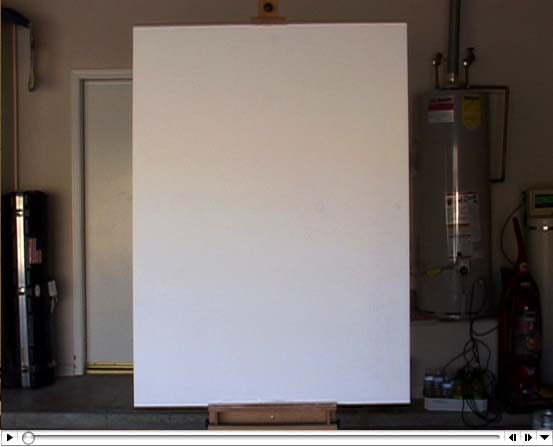
To see the process, click the image above for the hi-res QT movie (1 min., 7.3Mb) or try the YouTube version.
When I first began this assignment - painting an “abstract” Grand Canyon - my initial foothold was the realization that I didn’t have to conceive or execute a vision so much as embody processes congruent to those which formed the Canyon, itself. Geomimicry as painting strategy: The accumulation of sediment (or paint) and the process of erosion that resurfaces that accumulation reveals its unique logic and corresponding beauty.
This created a particularly satisfying development of illusionistic depth and naturalistic proportions. In the same way that the Canyon represents a cleaving through geologic history, Canyon Ascent embodies a scraping through layers of art history.
Its fidelity to the abstractions of geomimicry and service make this painting read as representational. This resolution afforded me the rare experience of physically unearthing the academically observed substratum that undergirds America’s Abstract Expressionists: The Romantic Hudson River School painters - Cole, Kensett, Gifford, Bierstadt, Church.
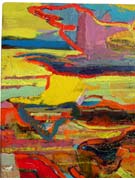 |
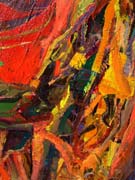 |
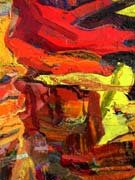 |
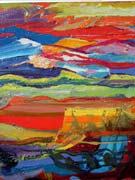 |
 |
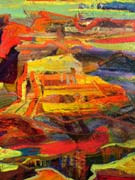 |
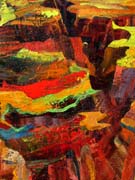 |
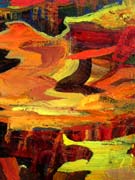 |
For a "Special Features" insight into this post click for further commentary.
Posted by mark at March 28, 2007 07:58 PM